Section 1: Fractals and their appearance in quantum phenomenon
Fractals are geometric shapes that exhibit self-similarity at different scales - that is, they contain smaller copies of themselves when you zoom in. Classic examples include the Koch snowflake, Sierpinski triangle, and Mandelbrot set. Unlike smooth curves or surfaces, fractals have fractional dimensions that fall between whole number topological dimensions. This fractal dimension quantifies how the complexity or detail of the shape changes as you examine it at finer scales.
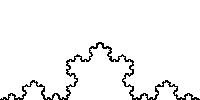
One common way to measure fractal dimension is the box-counting method. This involves covering the shape with progressively smaller boxes or grids and counting how many boxes are needed at each scale. For a smooth 1D curve, doubling the resolution (halving box size) would roughly double the number of boxes needed. But for a fractal curve, the number of boxes increases faster - if it increases by a factor of 3 when resolution doubles, that indicates a fractal dimension of about log(3)/log(2) ≈ 1.58. The coast of Britain famously has a fractal dimension of about 1.25.
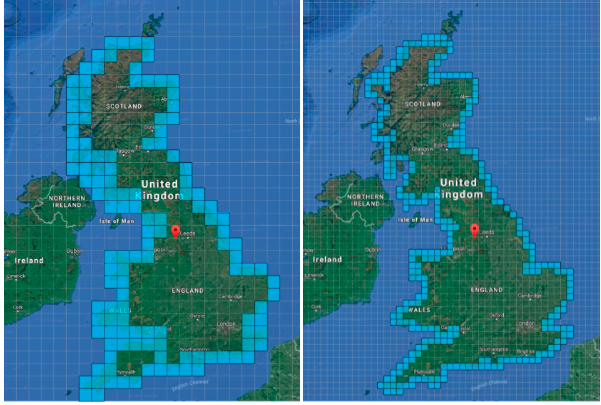
In the 1960s, Richard Feynman made the remarkable insight that the trajectories of quantum particles should be fractal curves with dimension 2. He reasoned that the Heisenberg uncertainty principle implies that measuring a particle’s position more precisely requires higher momentum uncertainty. This causes the velocity to fluctuate more wildly at smaller scales, producing an increasingly “jagged” path as you zoom in. Feynman showed mathematically that this effect would make quantum trajectories statistically similar to Brownian motion - the random walk of a particle buffeted by thermal collisions - which was already known to trace out fractal paths of dimension 2 in the limit of infinitesimal step size.
His main observations were:
-
Heisenberg’s uncertainty relation: How Heisenberg’s uncertainty principle relates position and momentum uncertainties. This relation is fundamental to understanding why quantum paths have fractal properties.
-
Feynman and Hibbs’ 1965 stated that “quantum-mechanical paths are very irregular” and that “the ‘mean’ square value of a velocity averaged over a short time interval is finite, but its value becomes larger as the interval becomes shorter.” This observation suggests non-differentiable, fractal-like behavior.
-
Mathematical derivation: The average distance traveled by a quantum particle scales with time as: <ΔX²> ~ Dt
Where D is identified as an effective diffusion coefficient equal to ℏ/2m (ℏ is Planck’s constant, m is the particle’s mass). -
Analogy with Brownian motion: The behavior of quantum paths resembles that of Brownian motion, which is known to have a fractal dimension of 2.
-
Scale-dependent velocity: As one look at shorter time intervals, the effective velocity of the quantum particle increases without bound, similar to how a fractal curve becomes increasingly “jagged” at smaller scales.
-
Transition in fractal dimension: There appears to be a transition in the fractal dimension of the path depending on the resolution scale. At very fine scales (below the de Broglie wavelength), the path behaves with D=2, while at larger scales it transitions to classical behavior with D=1.


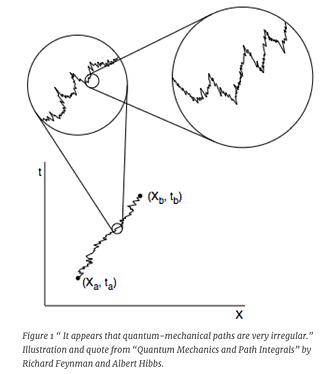

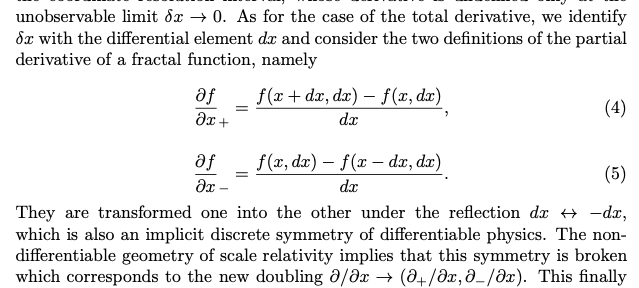
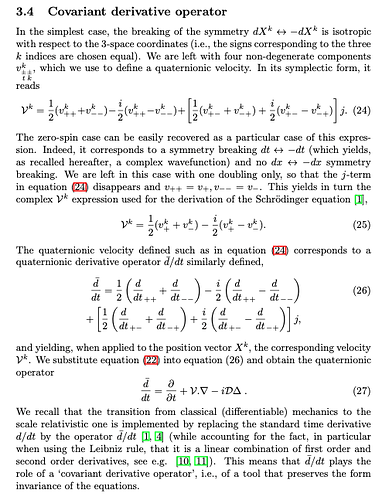

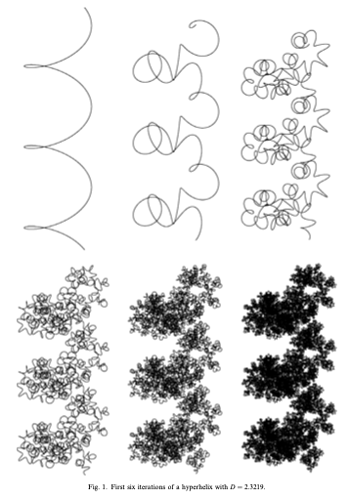


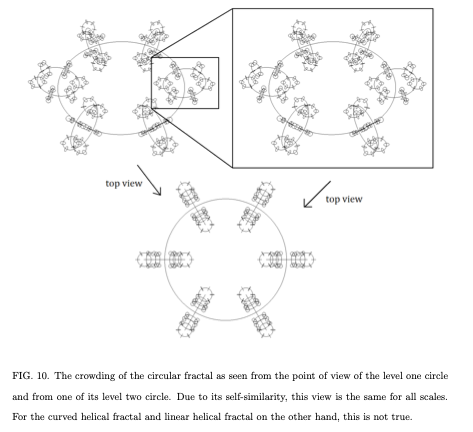
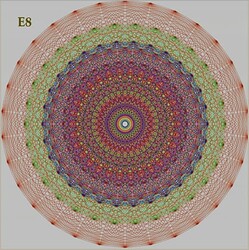
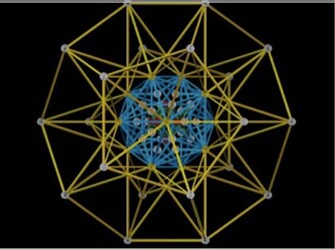

 I find your posts on science/physics etc fascinating - please continue !!
I find your posts on science/physics etc fascinating - please continue !!